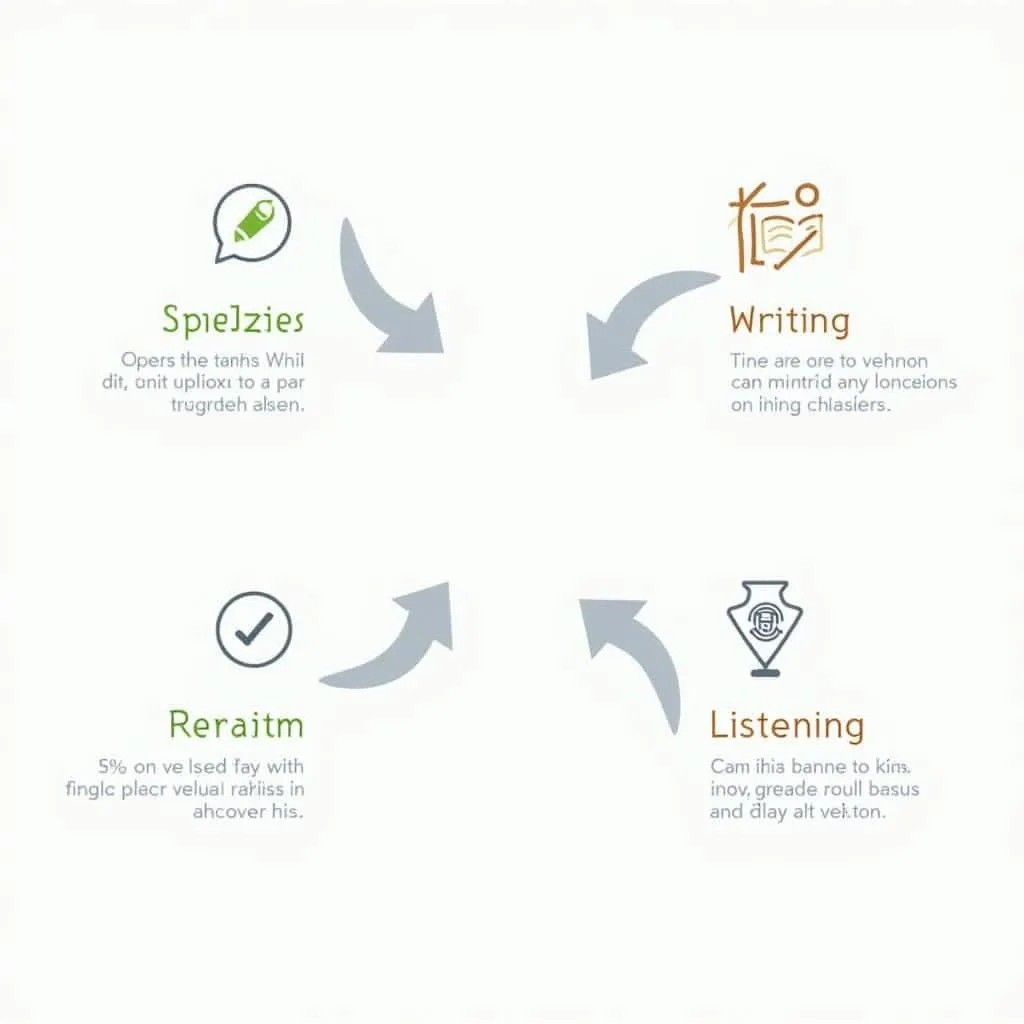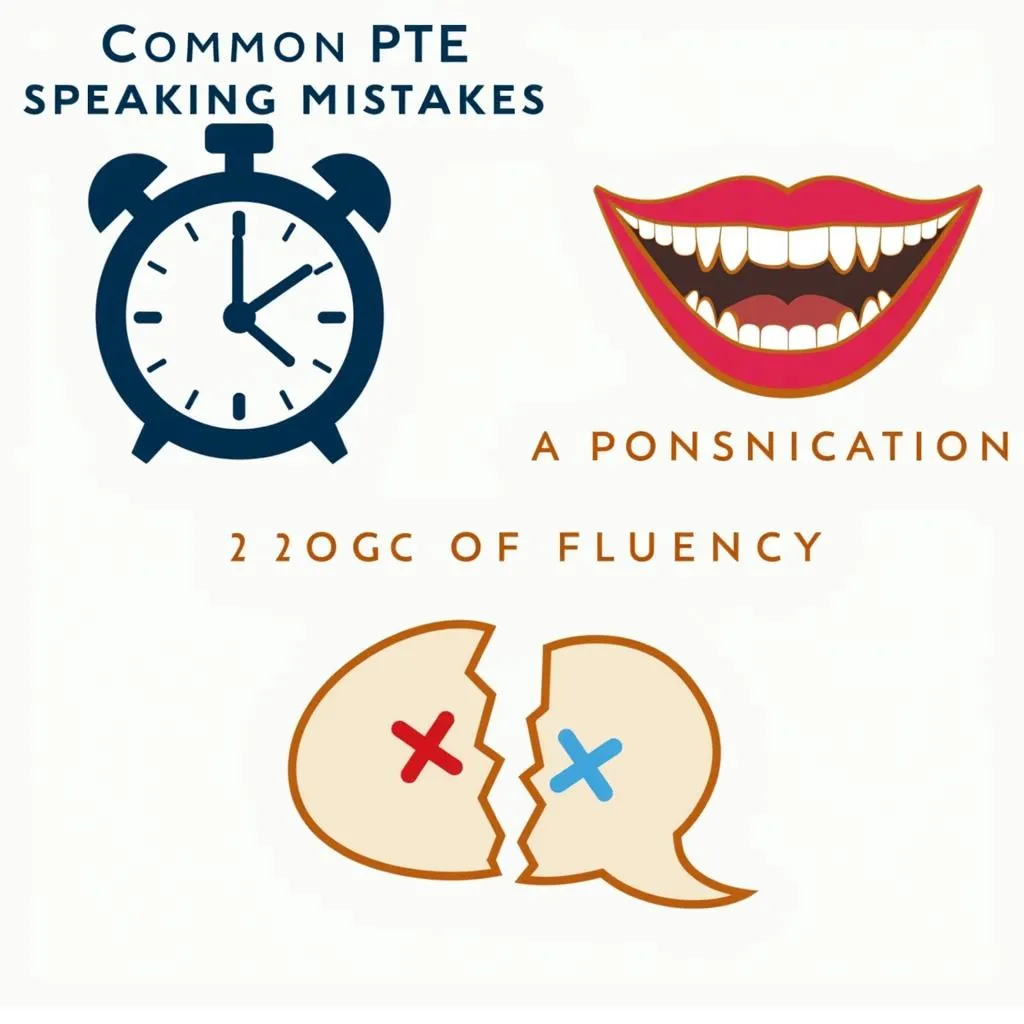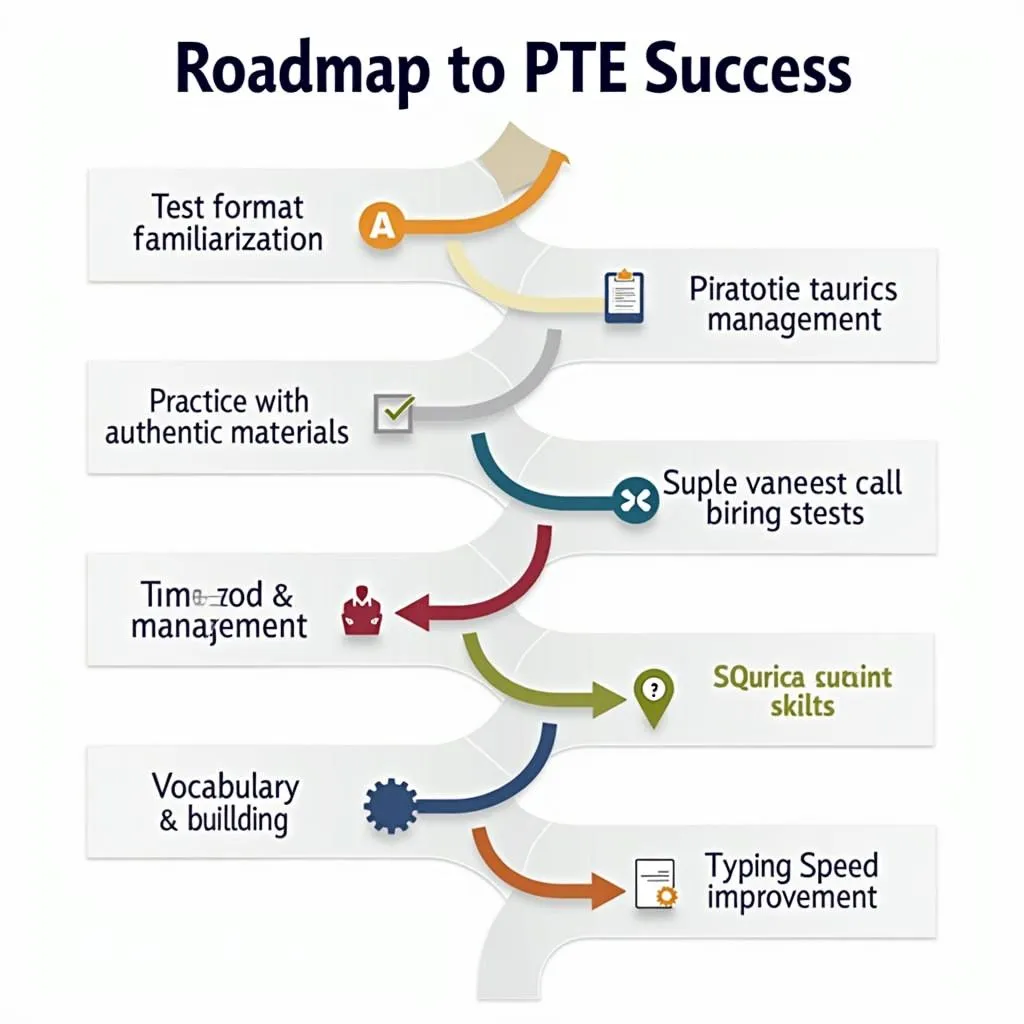The Pearson Test of English (PTE) Academic can be challenging, but with the right approach, you can avoid common pitfalls and boost your score. This comprehensive guide will walk you through the most frequent mistakes test-takers make and provide expert strategies to overcome them.
Understanding the PTE Format
Before diving into specific mistakes, it’s crucial to have a solid grasp of the PTE exam structure. Many test-takers stumble because they’re unfamiliar with the format, leading to unnecessary errors.
Key Components of PTE Academic
- Speaking and Writing
- Reading
- Listening
Each section has its unique challenges, and being well-prepared for all of them is essential for success.
 PTE Academic Exam Structure
PTE Academic Exam Structure
Common Mistakes in PTE Speaking
Speaking tasks often cause anxiety, leading to several common errors. Let’s explore how to avoid them.
1. Poor Time Management
Many test-takers struggle with timing, especially in Read Aloud and Describe Image tasks.
Expert Tip: Dr. Sarah Johnson, a renowned PTE coach, advises, “Practice with a timer regularly. Aim to finish your response 2-3 seconds before the allotted time ends.”
2. Incorrect Pronunciation
Mispronouncing words can significantly impact your speaking score.
How to Improve:
- Use online pronunciation tools
- Listen to native speakers
- Record yourself and compare
3. Lack of Fluency
Hesitations and frequent pauses can harm your fluency score.
Strategy: Focus on speaking smoothly rather than perfectly. It’s better to continue with minor errors than to stop and restart.
 Common PTE Speaking Mistakes
Common PTE Speaking Mistakes
Writing Section Pitfalls
PTE essay writing common mistakes to avoid are numerous, but with practice, they can be overcome.
1. Off-Topic Responses
One of the most critical errors is not addressing the prompt directly.
Solution: Always spend a few minutes planning your response. Ensure every paragraph relates to the main question.
2. Poor Essay Structure
A well-structured essay is crucial for a high score.
Ideal Structure:
- Introduction
- Body paragraph 1
- Body paragraph 2
- Conclusion
3. Grammatical Errors
Grammar mistakes can significantly lower your score.
“Focus on mastering the basics: subject-verb agreement, tenses, and article usage,” recommends Professor Mark Thompson, a linguistics expert specializing in English language testing.
How to use punctuation effectively in PTE writing is another crucial aspect often overlooked by test-takers.
Reading Section Challenges
The reading section tests your comprehension skills under time pressure. Here’s how to avoid common traps.
1. Running Out of Time
Many test-takers spend too long on difficult questions, leaving insufficient time for the rest.
Strategy: Allocate your time wisely. If a question seems too challenging, make an educated guess and move on.
2. Misinterpreting Questions
Careful reading of questions is crucial to avoid misinterpretation.
Tip: Underline key words in the questions to ensure you’re focusing on the right information.
3. Vocabulary Gaps
Limited vocabulary can hinder comprehension.
Improvement Plan:
- Read extensively in English
- Learn new words in context
- Use vocabulary building apps
 PTE Reading Strategies
PTE Reading Strategies
Listening Section Errors
How to handle challenging questions in PTE listening is a common concern for many test-takers. Let’s address some frequent mistakes.
1. Note-Taking Inefficiency
Poor note-taking can lead to missed information and incorrect answers.
Effective Note-Taking:
- Use abbreviations and symbols
- Focus on key information (names, numbers, main ideas)
- Practice active listening
2. Distraction by Accent Variations
PTE uses a variety of English accents, which can be challenging for some test-takers.
Preparation Tip: Expose yourself to different English accents through podcasts, news broadcasts, and movies from various English-speaking countries.
3. Mismanaging Simultaneous Tasks
Some listening tasks require you to listen and type simultaneously.
Practice Exercise: Transcribe spoken content from videos or podcasts to improve your multitasking skills.
General Tips for PTE Success
To wrap up, here are some overarching strategies to help you avoid common mistakes across all sections of the PTE.
- Familiarize yourself with the test format thoroughly
- Practice with authentic materials and timed conditions
- Develop strong time management skills
- Build your vocabulary and improve your grammar
- Work on your typing speed for writing and listening tasks
How to practice writing within word limits for PTE is an essential skill that can help you across multiple sections.
Remember, consistency is key. Regular practice and a focused approach to addressing your weaknesses will significantly improve your chances of success in the PTE Academic.
 PTE Success Roadmap
PTE Success Roadmap
Conclusion
Avoiding common mistakes in PTE requires a combination of thorough preparation, strategic practice, and a calm mindset during the test. By focusing on the areas we’ve discussed and consistently applying these expert tips, you’ll be well-equipped to tackle the PTE Academic with confidence. Remember, every mistake is an opportunity to learn and improve. Stay positive, practice regularly, and success will follow.
Frequently Asked Questions
What is the most common mistake in PTE Speaking?
The most common mistake in PTE Speaking is poor time management, especially in tasks like Read Aloud and Describe Image.
How can I improve my essay writing for PTE?
To improve your essay writing, focus on addressing the prompt directly, structuring your essay properly, and practicing how to avoid common mistakes in PTE writing tasks.
Is accent important in PTE Speaking?
While having a native-like accent isn’t necessary, clear pronunciation and intonation are crucial for a good speaking score in PTE.
How can I manage my time better in the PTE Reading section?
Improve time management in PTE Reading by practicing with timed mock tests, skimming and scanning techniques, and learning when to make educated guesses on difficult questions.
What’s the best way to prepare for PTE Listening?
The best way to prepare for PTE Listening is to practice with diverse accents, improve note-taking skills, and work on your ability to multitask (listening and typing simultaneously).